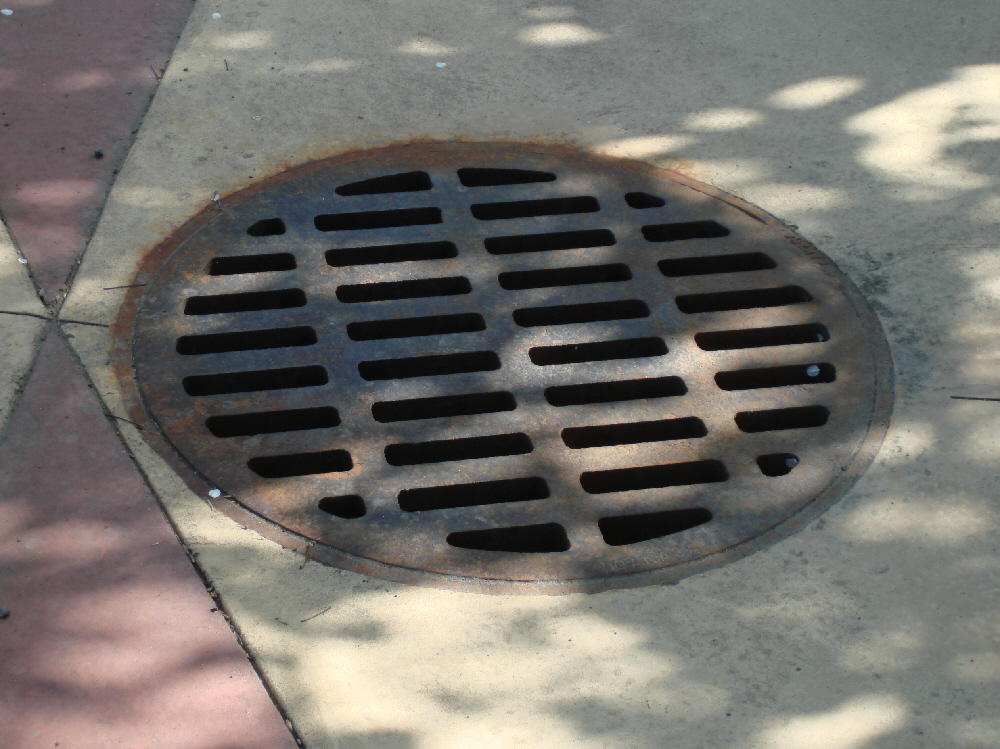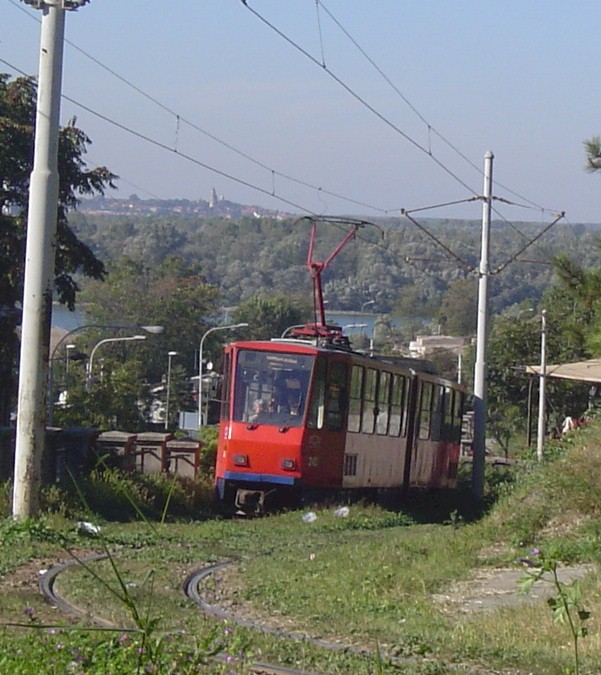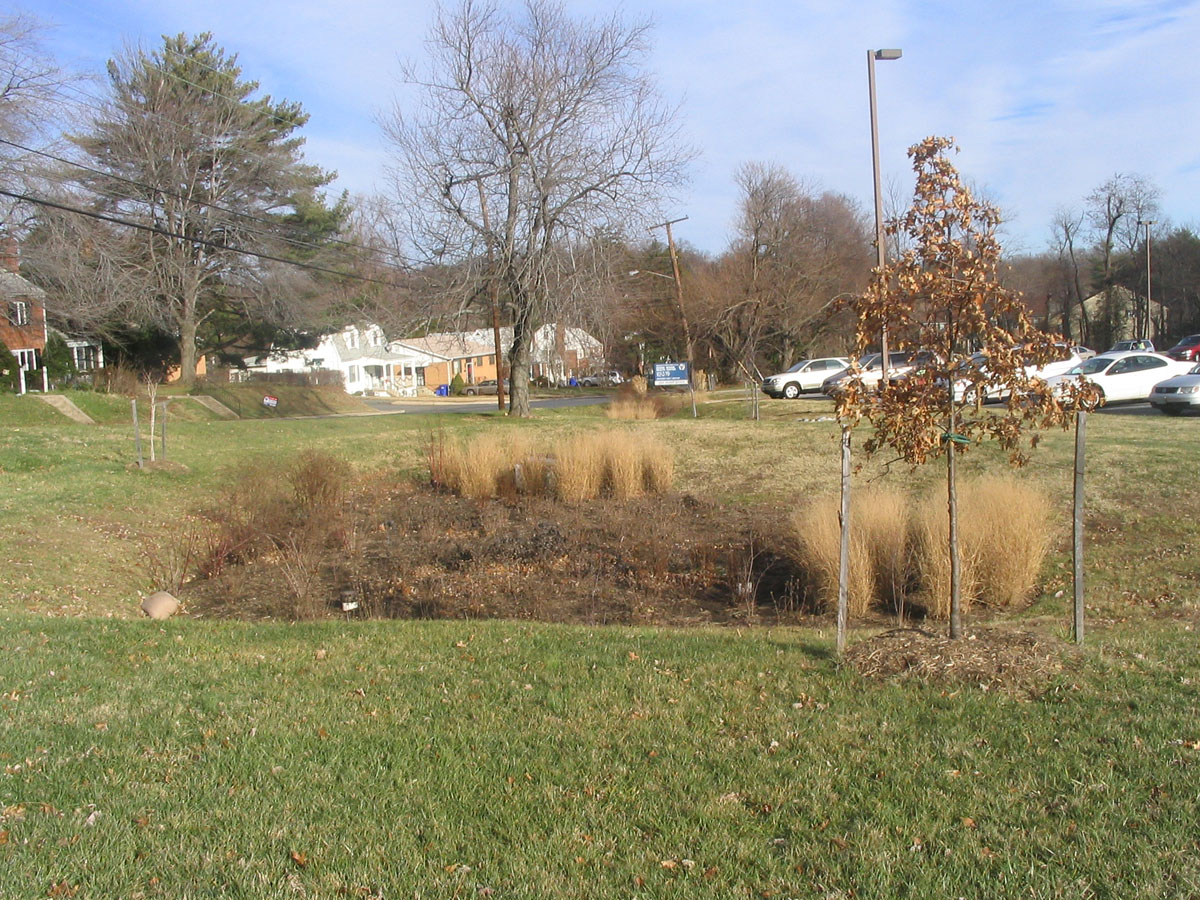|
Level Spreader
A level spreader is an erosion control device designed to reduce water pollution by mitigating the impact of high-velocity stormwater surface runoff. It is used both on construction sites and for permanent applications such as drainage for roads and highways. The device reduces the energy level in high-velocity flow by converting it into sheet flow, and disperses the discharged water so that it may be infiltrated into soil. Massachusetts Department of Environmental Protection. Boston, MA"Erosion and Sediment Control Guidelines for Urban and Suburban Areas."May 2003. p. 109. Level spreaders may be used in conjunction with runoff infiltration devices such as bioretention systems, infiltration basins and percolation trenches. See also *impervious surface * low impact development *urban runoff Urban runoff is surface runoff of rainwater, landscape irrigation, and car washing created by urbanization. Impervious surfaces (roads, parking lots and sidewalks) are constructed dur ... [...More Info...] [...Related Items...] OR: [Wikipedia] [Google] [Baidu] |
Level Spreader Diagram
Level or levels may refer to: Engineering *Level (instrument), a device used to measure true horizontal or relative heights *Spirit level, an instrument designed to indicate whether a surface is horizontal or vertical *Canal pound or level *Regrading or levelling, the process of raising and/or lowering the levels of land * Storey or level, a vertical unit of a building or a mine *Level (coordinate), vertical position Gaming *Level (video games), a stage of the game *Level (role-playing games), a measurement of character development Music *Level (music), similar to but more general and basic than a chord * ''Levels'' (album), an album by AKA * "Levels" (Avicii song) * "Levels" (Bilal song) * "Levels" (Nick Jonas song) * "Levels" (Meek Mill song) * "Level" (The Raconteurs song) * "Levels" (NorthSideBenji song), featuring Houdini Places *Level Mountain, a volcano in northern British Columbia, Canada *Levél, Győr-Moson-Sopron, Hungary *Levels, New Zealand *Level, Ohio, United Sta ... [...More Info...] [...Related Items...] OR: [Wikipedia] [Google] [Baidu] |
Infiltration Basin
An infiltration basin (or recharge basin) is a form of engineered sump or percolation pond that is used to manage stormwater runoff, prevent flooding and downstream erosion, and improve water quality in an adjacent river, stream, lake or bay. It is essentially a shallow artificial pond that is designed to infiltrate stormwater through permeable soils into the groundwater aquifer. Infiltration basins do not release water except by infiltration, evaporation or emergency overflow during flood conditions. It is distinguished from a detention basin, sometimes called a dry pond, which is designed to discharge to a downstream water body (although it may incidentally infiltrate some of its volume to groundwater); and from a retention basin, which is designed to include a permanent pool of water. Design considerations Infiltration basins must be carefully designed to infiltrate the soil on a given site at a rate that will not cause flooding. They may be less effective in areas with: * Hi ... [...More Info...] [...Related Items...] OR: [Wikipedia] [Google] [Baidu] |
Environmental Soil Science
Environmental soil science is the study of the interaction of humans with the pedosphere as well as critical aspects of the biosphere, the lithosphere, the hydrosphere, and the atmosphere. Environmental soil science addresses both the fundamental and applied aspects of the field including: buffers and surface water quality, vadose zone functions, septic drain field site assessment and function, land treatment of wastewater, stormwater, erosion control, soil contamination with metals and pesticides, remediation of contaminated soils, restoration of wetlands, soil degradation, nutrient management, movement of viruses and bacteria in soils and waters, bioremediation, application of molecular biology and genetic engineering to development of soil microbes that can degrade hazardous pollutants, land use, global warming, acid rain, and the study of anthropogenic soils, such as terra preta. Much of the research done in environmental soil science is produced through the use of models. Se ... [...More Info...] [...Related Items...] OR: [Wikipedia] [Google] [Baidu] |
Construction
Construction is a general term meaning the art and science to form Physical object, objects, systems, or organizations,"Construction" def. 1.a. 1.b. and 1.c. ''Oxford English Dictionary'' Second Edition on CD-ROM (v. 4.0) Oxford University Press 2009 and comes from Latin ''constructio'' (from ''com-'' "together" and ''struere'' "to pile up") and Old French ''construction''. To construct is the verb: the act of building, and the noun is construction: how something is built, the nature of its structure. In its most widely used context, construction covers the processes involved in delivering buildings, infrastructure, industrial facilities and associated activities through to the end of their life. It typically starts with planning, financing, and design, and continues until the asset is built and ready for use; construction also covers repairs and maintenance work, any works to expand, extend and improve the asset, and its eventual demolition, dismantling or wikt:decommission, ... [...More Info...] [...Related Items...] OR: [Wikipedia] [Google] [Baidu] |
Level Spreader
A level spreader is an erosion control device designed to reduce water pollution by mitigating the impact of high-velocity stormwater surface runoff. It is used both on construction sites and for permanent applications such as drainage for roads and highways. The device reduces the energy level in high-velocity flow by converting it into sheet flow, and disperses the discharged water so that it may be infiltrated into soil. Massachusetts Department of Environmental Protection. Boston, MA"Erosion and Sediment Control Guidelines for Urban and Suburban Areas."May 2003. p. 109. Level spreaders may be used in conjunction with runoff infiltration devices such as bioretention systems, infiltration basins and percolation trenches. See also *impervious surface * low impact development *urban runoff Urban runoff is surface runoff of rainwater, landscape irrigation, and car washing created by urbanization. Impervious surfaces (roads, parking lots and sidewalks) are constructed dur ... [...More Info...] [...Related Items...] OR: [Wikipedia] [Google] [Baidu] |
Urban Runoff
Urban runoff is surface runoff of rainwater, landscape irrigation, and car washing created by urbanization. Impervious surfaces (roads, parking lots and sidewalks) are constructed during land development. During rain , storms and other precipitation events, these surfaces (built from materials such as asphalt and concrete), along with rooftops, carry polluted stormwater to storm drains, instead of allowing the water to percolate through soil. This causes lowering of the water table (because groundwater recharge is lessened) and flooding since the amount of water that remains on the surface is greater.Water Environment Federation Alexandria, VA; an American Society of Civil Engineers Reston, VA [...More Info...] [...Related Items...] OR: [Wikipedia] [Google] [Baidu] |
Low-impact Development (Canada/US)
Low-impact development (LID) is a term used in Canada and the United States to describe a land planning and engineering design approach to manage stormwater runoff as part of green infrastructure. LID emphasizes conservation and use of on-site natural features to protect water quality. This approach implements engineered small-scale hydrologic controls to replicate the pre-development hydrologic regime of watersheds through infiltrating, filtering, storing, evaporating, and detaining runoff close to its source. Green infrastructure investments are one approach that often yields multiple benefits and builds city resilience. Broadly equivalent terms used elsewhere include Sustainable drainage systems (SuDS) in the United Kingdom (where LID has a different meaning), water-sensitive urban design (WSUD) in Australia, natural drainage systems in Seattle, Washington, "Environmental Site Design" as used by the Maryland Department of the Environment, and "Onsite Stormwater Mana ... [...More Info...] [...Related Items...] OR: [Wikipedia] [Google] [Baidu] |
Impervious Surface
Impervious surfaces are mainly artificial structures—such as pavements (roads, sidewalks, driveways and parking lots, as well as industrial areas such as airports, ports and logistics and distribution centres, all of which use considerable paved areas) that are covered by water-resistant materials such as asphalt, concrete, brick, stone—and rooftops. Soils compacted by urban development are also highly impervious. Environmental effects Impervious surfaces are an environmental concern because their construction initiates a chain of events that modifies urban air and water resources: * The pavement materials seal the soil surface, eliminating rainwater infiltration and natural groundwater recharge. An article in the ''Seattle Times'' states that "while urban areas cover only 3 percent of the U.S., it is estimated that their runoff is the primary source of pollution in 13 percent of rivers, 18 percent of lakes and 32 percent of estuaries." :Some of these pollutants includ ... [...More Info...] [...Related Items...] OR: [Wikipedia] [Google] [Baidu] |
Percolation Trench
A percolation trench, also called an infiltration trench, is a type of best management practice (BMP) that is used to manage stormwater runoff, prevent flooding and downstream erosion, and improve water quality in an adjacent river, stream, lake or bay. It is a shallow excavated trench filled with gravel or crushed stone that is designed to infiltrate stormwater though permeable soils into the groundwater aquifer. A percolation trench is similar to a dry well, which is typically an excavated hole filled with gravel. Another similar drainage structure is a French drain, which directs water away from a building foundation, but is usually not designed to protect water quality. Application and design Percolation trenches are often used to treat runoff from impervious surfaces, such as sidewalks and parking lots, on sites where there is limited space available for managing stormwater. They are effective at treating stormwater only if the soil has sufficient porosity. To funct ... [...More Info...] [...Related Items...] OR: [Wikipedia] [Google] [Baidu] |
Bioretention
Bioretention is the process in which contaminants and sedimentation are removed from stormwater runoff. The main objective of the bioretention cell is to attenuate peak runoff as well as to remove stormwater runoff pollutants. Construction of a bioretention area Stormwater is firstly directed into the designed treatment area, which conventionally consists of a sand bed (which serves as a transition to the actual soil), a filter media layer (which consists of layered materials of various composition), and plants atop the filter media. Various soil amendment such as water treatment residue (WTR), Coconut husk, biochar etc have been proposed over the years. These materials were reported to have enhanced performance in terms of pollutant removal. Runoff passes first over or through a sand bed, which slows the runoff's velocity, distributes it evenly along the length of the ponding area, which consists of a surface organic layer and/or groundcover and the underlying planting soil. ... [...More Info...] [...Related Items...] OR: [Wikipedia] [Google] [Baidu] |
Erosion Control
Erosion control is the practice of preventing or controlling wind or water erosion in agriculture, land development, coastal areas, river banks and construction. Effective erosion controls handle surface runoff and are important techniques in preventing water pollution, soil loss, wildlife habitat loss and human property loss. Usage Erosion controls are used in natural areas, agricultural settings or urban environments. In urban areas erosion controls are often part of stormwater runoff management programs required by local governments. The controls often involve the creation of a physical barrier, such as vegetation or rock, to absorb some of the energy of the wind or water that is causing the erosion. They also involve building and maintaining storm drains. On construction sites they are often implemented in conjunction with sediment controls such as sediment basins and silt fences. Bank erosion is a natural process: without it, rivers would not meander and change c ... [...More Info...] [...Related Items...] OR: [Wikipedia] [Google] [Baidu] |
Soil
Soil, also commonly referred to as earth or dirt Dirt is an unclean matter, especially when in contact with a person's clothes, skin, or possessions. In such cases, they are said to become dirty. Common types of dirt include: * Debris: scattered pieces of waste or remains * Dust: a gener ..., is a mixture of organic matter, minerals, gases, liquids, and organisms that together support life. Some scientific definitions distinguish ''dirt'' from ''soil'' by restricting the former term specifically to displaced soil. Soil consists of a solid phase of minerals and organic matter (the soil matrix), as well as a Porosity, porous phase that holds Soil gas, gases (the soil atmosphere) and water (the soil solution). Accordingly, soil is a three-state of matter, state system of solids, liquids, and gases. Soil is a product of several factors: the influence of climate, terrain, relief (elevation, orientation, and slope of terrain), organisms, and the soil's parent materials (ori ... [...More Info...] [...Related Items...] OR: [Wikipedia] [Google] [Baidu] |

_(29856364125).jpg)




